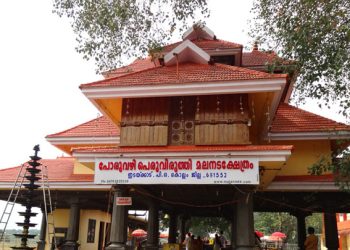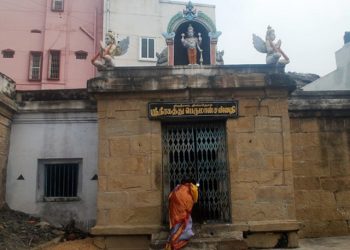The Leaning Temple of Huma in India is the only leaning temple in the world. The temple is dedicated to the Hindu god Shiva.It is not known if this structure is learning by design or for another reason. While the edifice leans, the pinnacle of the temple is perpendicular to the ground.

Legends Associated with This Shrine
The worship of Shiva is said to have been initiated by a milkman, who crossed the Mahanadi daily to a place on the bank where the underlying rock cropped out. Here he offered his dole of milk, which was immediately consumed by the rock. This miraculous circumstance led to inquiries, which ended in the construction of the present temple.

Architectural Relevance of This Shrine
Apart from the main temple, the Bhairavi Devi temple is situated to the left of the main temple and Bhairo temple is situated to the right of the main temple. According to historical records Ganga Vamsi Emperor Anangabhima Deva-III built this temple. The temple was rebuilt or renovated by King Baliar Singh , the fifth Chauhan king of Sambalpur. The rest of the temples were built during the rule of King Ajit Singh of Sambalpur. Vimaleswar temple, Huma ‘Kudo’ Fish at the river bank. They eat edibles from visitors’ hands. The temple is positioned on the rocky cradle just on the bank of the river Mahanadi. The basis of learning cannot be assumed to be the technical flaws at the time of construction. It is also not easily acceptable that weak foundation might have caused the learning attitude of the temple. In fact, construction of the temple is quite favourite of Chauhan Kings as well known to us from innumerable temples built during their reigns. They had already established themselves as good builders. Again, the temple is not an enormous structure. There might have been interior displacement of the rocky bed on which it stands, either due to flood current in the river Mahanadi or earthquake, thus affecting the straight posture of the original temple. In other words, the plinth of the temple has deviated slightly from its original arrangement and as a result, the body of the temple has tilted. There is no denying the fact that this has fascinated the attention of historians, sculptors and other researchers.
The surprising thing is, the main temple is tilted to one direction and other small temples are tilted to some other directions. Within the temple complex i.e. within the boundaries of the temple, everything found to be in tilted condition including the boundaries and the angle of inclination is not changed since last 40/50 years as said by the villagers and priests. The reason of the tilt can be due to some geological reason, may be the earth crust is uneven in structure. The angle of inclination is yet to be measured.
Shrine’s Map Location and How to Go There
By Road
Huma is about 23 km towards the southern direction of Sambalpur, Orissa. Huma is well linked with Sambalpur and other cities and towns of Orissa by Road. After reaching Huma one can easily get to the leaning temple which is inside the village of Huma.
By Rail
The closest railway station from Huma is Sambalpur railway station. Outside the railway station taxis and cabs are there by which one can easily get to the leaning temple in Huma which is only 23 km away.
By Air
Bhubaneswar and Raipur are the nearest airports.
Events Celebrated at This Shrine
Mahashivratri
Extra Information About this Shrine
The most visited day of this temple is the Shivratri when a large number of devotees come here for offering milk to the idol of Lord Shiva, present in this temple. It is advisable to visit Huma temple from October to March although temperature gets extremes in both summer and winter seasons. The leaning temple of Huma is mostly visited during Mahashivratri. Nearby destinations around Huma temple are Hirakud Dam, Samaleswari Temple, Ghanteshwari Temple.













































